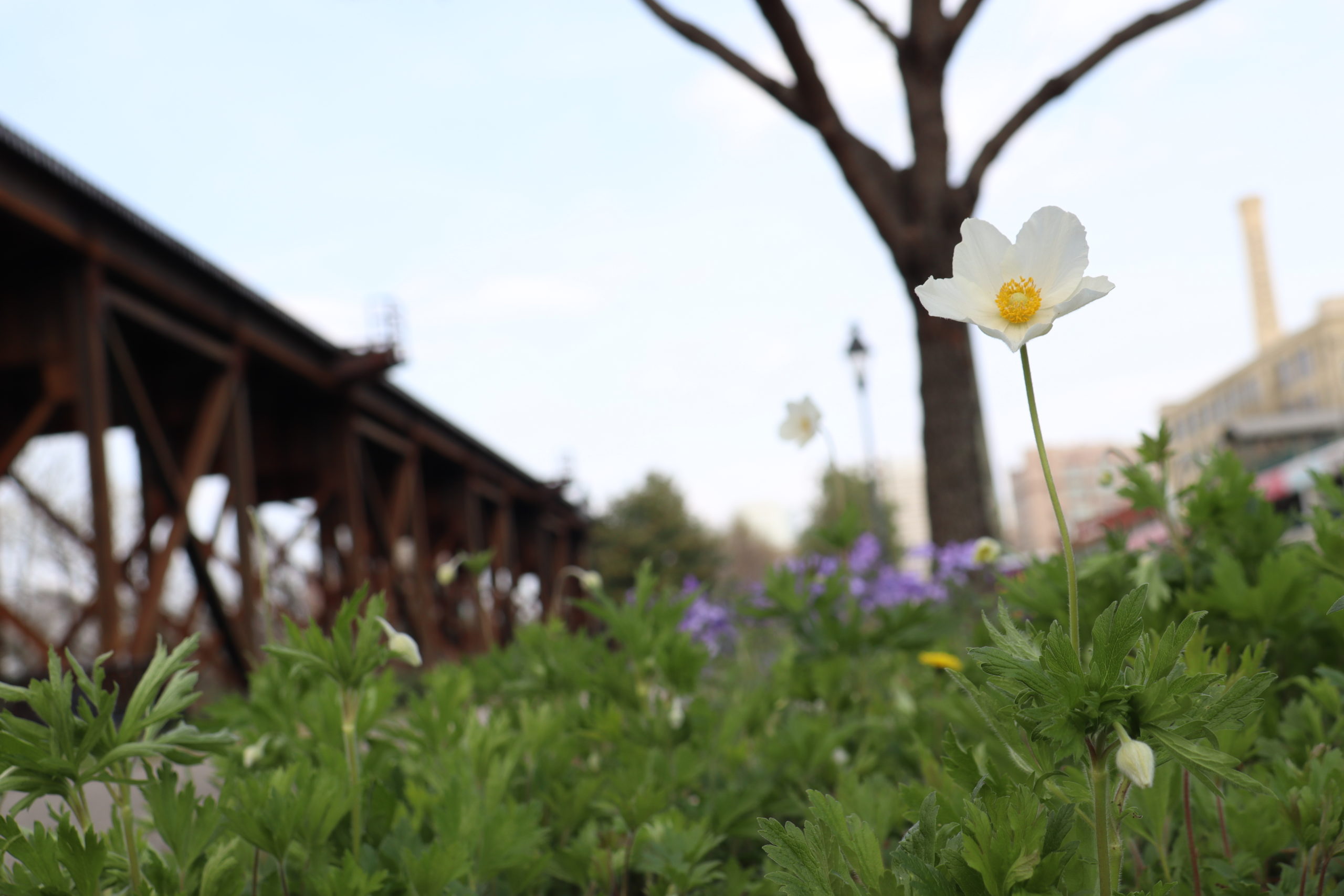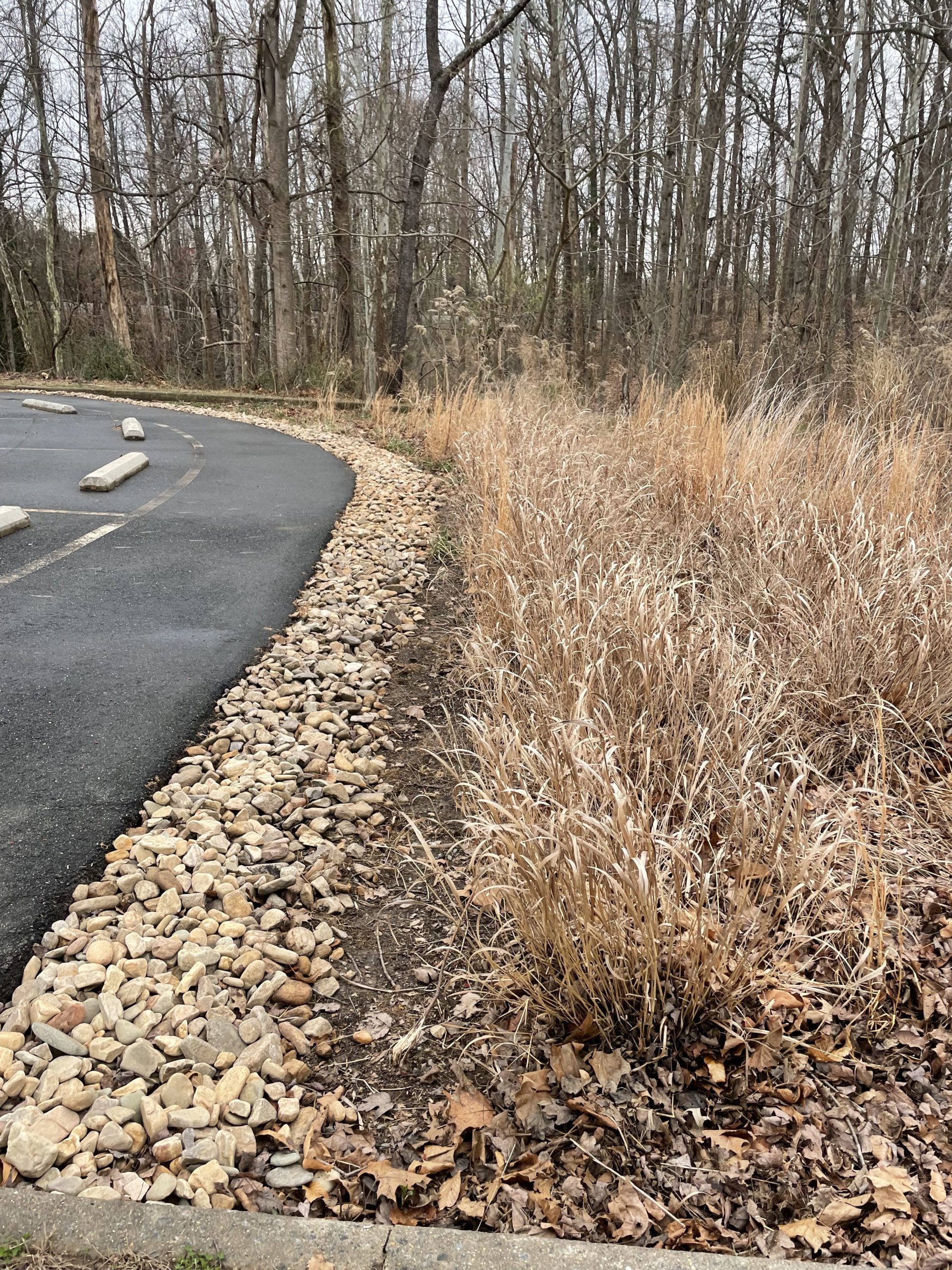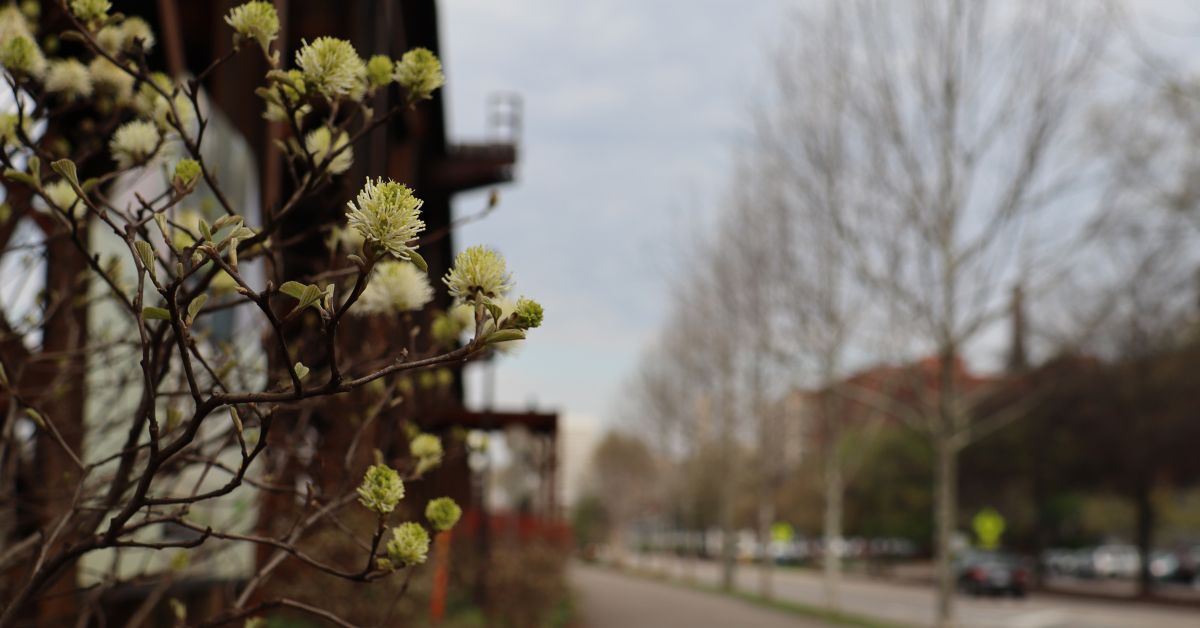Author: Shelly Barrick Parsons, Executive Director
Capital Trees is committed to the best practices in sustainable management of public landscapes. To strengthen our knowledge and practice, Lisa Trapp (Program and Outreach Manager) and I are seeking certification as Level 1 Chesapeake Bay Professional Landscape Professionals through the Chesapeake Bay Landscape Council (1)(2). This certification is for anyone working in conservation landscaping including private and public landscapes. The certification process includes two days of virtual classes, one day of onsite training, and a passing score on the certification exam.
The certification is grounded in eight practices including native planting, removing and managing invasive plants, improving soil, air, and water quality, improving the environment, and providing habitat for native wildlife(3). Capital Trees chose to send staff to this training because these practices align with our sustainable management commitments including topics we have been outlining in previous posts (Invasives, soil 1, soil 2, weeds).
The training has highlighted several key considerations for the sustainable management of public landscapes. Three of these are briefly described in this blog – native plants, management, and communication.

Native plants:
Native plants are those that have existed in an eco-region since the last ice age and/or plants that were present in a region or habitat without human introduction (4). Native plants are essential to sustainable landscaping and climate resilience. Native plants increase biodiversity and provide food and shelter for native wildlife including pollinators. When site appropriate native plants are selected, they can thrive with less water, fertilizer, and pesticides once established. The goal of many public landscapes is to create a sense of space and place for users; native plants can help ground visitors by drawing attention to the unique elements of the natural landscape that define a region. Highlighting native plants in public spaces can also help grow a deeper respect for the local ecosystem.

Management:
We took ‘field’ trips to several best management practices for sustainable landscaping including many stormwater management BMPs. Since this is a blog on sustainable management of public landscapes, I would be remiss if I did not discuss the importance of at least two things in conservation landscaping. First, it is important to consider the management of the landscape in the design and construction of the landscape. This includes how the space will be used, who will manage the space, and what skills, knowledge, and tools are available for the management of the landscape post construction. For example, while it is important to have a planting plan that increases biodiversity with a variety of native plants, it is important also to remember that the folks managing the landscape must be able to identify the plants that should and should not be present in the landscape. In addition, a planting plan that relies on plants to later fill in leaving lots of bare soil is also leaving space for unwelcome visitors (including invasive plants) to take root in the voids, requiring invasive plant management time and resources. A tighter initial planting plan helps prevent this. Second, ongoing inspection, supervision, and management of landscapes is essential to keep the landscape functioning in a way that increases climate resilience, remains a habitat for wildlife, and is attractive and welcoming to users. Ongoing care and management is strengthened when final plans and management plans are communicated to all parties who have responsibilities on the site including but not limited to site supervisors, landscape contractors, and program staff.

Communication:
Finally, communication is essential in establishing and caring for public landscapes. There are multiple stakeholders interacting with public landscapes including the staff running programs and managing facilities, landscape contractors, site supervisors, and landscape users. In order to improve the long term care of these landscapes, it is important that there is a clear understanding of the best management practices for the site so that issues can be reported and resolved quickly. In addition, it is important to have a clear management plan post construction that is reviewed with staff or contractors responsible for management. Conservation landscaping also employs new planting and management techniques that might be unfamiliar to visitors who are used to ornamental landscaping. This includes the practice of leaving dead plants throughout the winter as food and shelter for wildlife along with using native plants. Educating visitors to the landscape about best practices through a variety of channels is also important to raise awareness and inspire these practices to be applied beyond the public realm into their personal landscapes.
Capital Trees is committed to learning about and implementing sustainable practices to manage the public landscapes under our care. We aspire to a minimum of 70% site appropriate native plants in our projects. We work collaboratively with our partners including volunteers, city departments, and landscape contractors to sustainably manage our projects along with communicating those practices through our social media channels.
References
- Level 1 Certification: https://cblpro.org/
- Chesapeake Bay Landscape Council: https://www.chesapeakelandscape.org/
- The Eight Essential Elements of Conservation Landscaping: https://www.chesapeakelandscape.org/resources/the-eight-essential-elements/
- What Makes a Virginia Plant Native? https://www.plantvirginianatives.org/what-is-a-virginia-native


